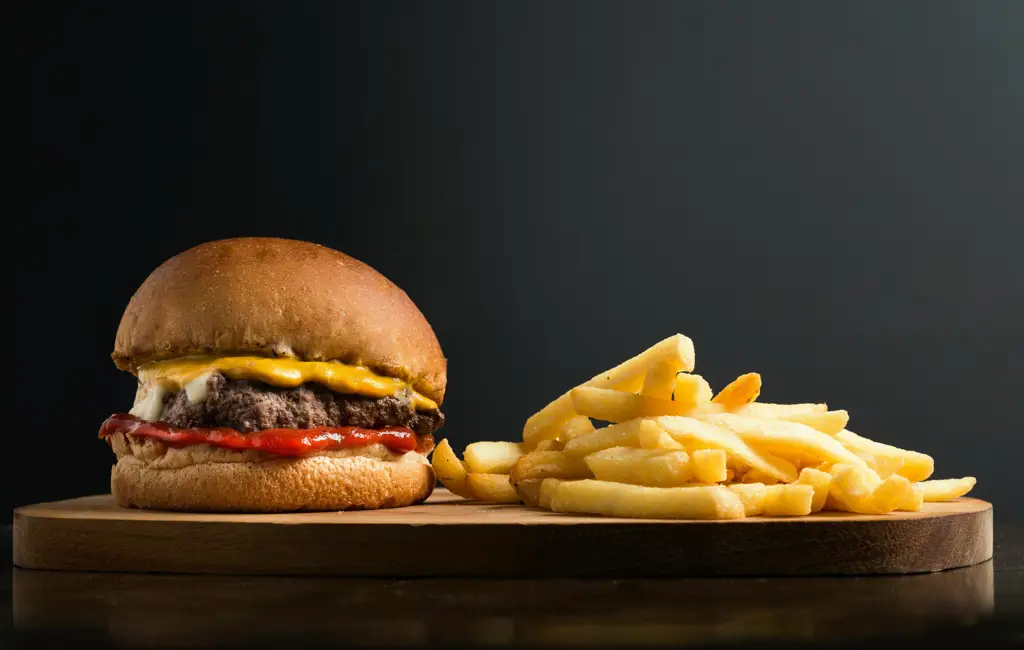Beef Wellington, a culinary masterpiece revered worldwide, is far more than just a delicious dish; it’s a testament to culinary evolution and sophistication. Its origins remain somewhat shrouded in mystery, with various claims vying for legitimacy. However, the most widely accepted theory points to its creation in the 19th century in England, likely within the upper echelons of society where extravagant feasts were common. While a precise inventor is elusive, its name suggests a connection to the Duke of Wellington, a prominent figure of the Napoleonic Wars, possibly due to the dish’s impressive size and impactful presentation, mirroring the Duke’s own imposing stature. The dish’s popularity surged throughout the 20th century, becoming a staple of celebratory meals and high-end restaurants.
The cultural significance of Beef Wellington is undeniable. It’s frequently associated with luxury, special occasions, and a demonstration of culinary skill. Its very construction, involving meticulous preparation and a precise layering of ingredients – from the perfectly seared beef tenderloin to the delicate duxelles of mushrooms, the crisp puff pastry, and the rich, savory jus – speaks to a dedication to culinary excellence. This elaborate process has also cemented its status as a challenging dish to master, adding to its allure. Anecdotal evidence suggests that successfully preparing a Beef Wellington is often considered a rite of passage for aspiring chefs, highlighting its integral role in culinary education and the development of advanced cooking techniques.
The dish’s intricate preparation, however, hasn’t hindered its enduring popularity. While exact statistics on its global consumption are hard to come by, its consistent presence on restaurant menus worldwide, particularly during holidays and celebrations, speaks volumes. Online searches for Beef Wellington recipe peak dramatically around major holidays like Christmas and Thanksgiving, suggesting a significant spike in home cooks attempting this culinary challenge. This widespread appeal transcends geographical boundaries, appearing as a celebratory dish in various cultures, adapted sometimes with minor regional variations. The enduring appeal of Beef Wellington lies not only in its exquisite taste but also in its presentation – a magnificent centerpiece that commands attention and elevates any dining experience.
The dish’s complexity also contributes to its mystique. It requires a precise understanding of cooking temperatures and timing to ensure the beef is cooked to perfection while the pastry remains golden and crisp. The layering of flavors, from the earthy mushrooms to the rich beef and the subtly sweet pastry, creates a symphony of taste that continues to captivate palates across generations. In the following sections, we will break down the preparation of this iconic dish step-by-step, making it accessible to even novice cooks, allowing you to experience the satisfaction of crafting this culinary legend.
Ingredients and Measurements
Creating a perfect Beef Wellington requires precise measurements and high-quality ingredients. Substituting ingredients can significantly impact the final result, so sticking to the list is crucial. Below, we detail each component with specific quantities for a Wellington serving 4-6 people. Adjust proportionally for larger or smaller servings.
Beef: You’ll need 1.5 lbs (680g) of beef tenderloin, ideally a center-cut piece. Choose a tenderloin that’s evenly shaped and free from blemishes. A slightly tapered piece is acceptable, but avoid ones with significant irregularities as this will make wrapping uneven. Trim any excess silver skin or fat, leaving a slightly thicker layer of fat on one side for flavor and moisture retention. Pat the tenderloin completely dry with paper towels before seasoning.
Seasoning the Beef: Generously season the beef with 2 teaspoons of kosher salt and 1 teaspoon of freshly cracked black pepper. Don’t be shy with the salt; it’s essential for flavor development. For an extra layer of complexity, consider adding a pinch of freshly grated nutmeg or a finely chopped clove of garlic to the seasoning blend. Rub the seasoning into the beef thoroughly, ensuring even coverage.
Duxelles (Mushroom Paste): This is a crucial component. You will need 8 ounces (225g) of cremini mushrooms, finely chopped, 4 ounces (115g) of finely chopped shallots, 2 tablespoons of unsalted butter, 2 tablespoons of finely chopped fresh thyme leaves, 1 tablespoon of finely chopped fresh parsley, and a pinch of salt and pepper. Use high-quality mushrooms for the best flavor. Sautéing the mushrooms until they release their moisture and brown is vital; this concentrates the flavor. Don’t rush this step.
Parma Ham or Prosciutto: You’ll need 8-10 slices of high-quality Parma ham or prosciutto, overlapping slightly to create a smooth and even layer around the beef. Ensure the slices are thin and pliable; thicker slices will be difficult to wrap neatly. The ham adds both flavor and texture and helps to seal in the moisture of the beef during cooking.
Puff Pastry: Use one sheet (14.1 ounces or 400g) of high-quality, all-butter puff pastry, thawed according to package instructions. Work with cold puff pastry to prevent it from becoming too soft and difficult to handle. Lightly dust your work surface with flour to prevent sticking.
Egg Wash: One large egg, beaten with 1 tablespoon of water. This will be used to glaze the pastry before baking, creating a beautiful golden-brown finish. Don’t skip the egg wash; it helps the pastry to brown evenly and gives it a glossy sheen.
Optional Additions: Consider adding a tablespoon of Dijon mustard between the beef and the duxelles for a tangy kick. Some recipes also incorporate a layer of pate de foie gras for an even richer flavor profile. However, these additions are optional and not essential for a delicious Beef Wellington.
Mise en Place (Preparation of Ingredients)
Before you even think about assembling your Beef Wellington, meticulous mise en place is crucial. This ensures a smooth and efficient cooking process, preventing rushed decisions that can compromise the final result. Proper preparation guarantees a perfectly cooked, beautifully presented dish.
Beef: Begin with 1.5 lbs (680g) of high-quality beef tenderloin. Ensure it’s completely dry before proceeding. Pat it down thoroughly with paper towels. This is vital for achieving a good sear. Trim any excess fat, leaving a thin layer for flavor, but removing any large, uneven sections that might prevent even cooking. Season generously with 2 teaspoons of kosher salt and 1 teaspoon of freshly cracked black pepper. Don’t be shy with the salt; it’s essential for flavor development.
Duxelles: The duxelles, a flavorful mushroom mixture, is a key component. Sauté 8 oz (225g) of finely chopped cremini mushrooms with 4 oz (115g) of finely chopped shallots in 2 tablespoons of unsalted butter until all moisture is evaporated and the mixture is deeply browned. This takes approximately 15-20 minutes on medium heat. Low and slow is key here; high heat will only steam the mushrooms. Season the duxelles with 1 teaspoon of salt, ½ teaspoon of black pepper, and 1 tablespoon of fresh thyme leaves. Let it cool completely before using.
Parma Ham: You’ll need approximately 10-12 slices of high-quality Parma ham. Overlap the slices slightly to create a large, even layer that will completely encase the beef. The Parma ham adds both flavor and prevents the pastry from sticking to the beef during cooking.
Puff Pastry: Use 1 sheet (14.1 oz/400g) of high-quality, ready-made puff pastry, thawed according to package instructions. Roll it out slightly on a lightly floured surface to ensure it’s large enough to completely enclose the beef and ham. This will make wrapping easier and prevent any potential breaks in the pastry during cooking.
Egg Wash: Whisk one large egg yolk with 1 tablespoon of water to create an egg wash. This will be used to seal the pastry and give it a beautiful golden-brown finish. Keep the egg wash refrigerated until you are ready to use it to prevent it from becoming watery.
Preparation Time Management: Prepare the duxelles well in advance. It’s best made a day ahead and then refrigerated. This allows the flavors to meld and makes the assembly process much smoother. Have all your ingredients prepped and readily available before you begin the assembly, as the process is relatively quick once you start.
Important Note: The quality of your ingredients directly impacts the final taste and presentation of your Beef Wellington. Invest in good quality beef, mushrooms, and puff pastry for the best possible results. Precise measurements are crucial for achieving the perfect balance of flavors and textures.
Beef Tenderloin Preparation (Sear, Seasoning)
Before embarking on the intricate process of assembling your Beef Wellington, meticulous preparation of the beef tenderloin is paramount. This stage lays the foundation for a perfectly cooked, flavorful centerpiece. We’ll focus on achieving a beautiful sear and a well-seasoned interior.
Begin by selecting a high-quality beef tenderloin, ideally around 2-2.5 pounds. Ensure the tenderloin is completely dry before proceeding. Pat it down thoroughly with paper towels; excess moisture will hinder proper searing. This seemingly small step significantly impacts the final result.
Next, we’ll season the tenderloin generously. For a 2-pound tenderloin, I recommend using approximately 2 teaspoons of kosher salt and 1 teaspoon of freshly ground black pepper. Don’t be shy with the salt! It’s crucial for developing flavor and creating a delicious crust. You can also add other seasonings to complement the beef, such as 1/2 teaspoon of garlic powder, 1/4 teaspoon of onion powder, or a pinch of dried thyme. Evenly distribute the seasoning all over the tenderloin, ensuring complete coverage.
Now, for the crucial searing process. High heat is key. Preheat your oven to 400°F (200°C). Heat a heavy-bottomed skillet, preferably cast iron, over high heat until it’s screaming hot. Add about 2 tablespoons of high-smoke-point oil, such as canola or grapeseed oil, to the skillet. Once the oil shimmers, carefully place the seasoned tenderloin in the hot skillet.
Sear the tenderloin for about 2-3 minutes per side, until a deep brown crust forms. This creates a wonderful Maillard reaction, enhancing the flavor and texture. Avoid overcrowding the pan; if necessary, sear the tenderloin in batches to ensure proper browning. Don’t move the tenderloin around too much during searing; let it develop a good crust before turning.
After searing, transfer the tenderloin to a wire rack set over a baking sheet. This allows for even cooking and prevents the bottom from steaming. Roast the tenderloin in the preheated oven for approximately 15-20 minutes for medium-rare, or until it reaches your desired internal temperature. Use a meat thermometer to ensure accuracy; medium-rare is typically around 130-135°F (54-57°C). Remember to let the tenderloin rest for at least 10-15 minutes before slicing, allowing the juices to redistribute for optimal tenderness.
Important Note: Resting time is crucial. Ignoring this step will result in a dry, less flavorful Wellington. Once rested, you’re ready to proceed with the next steps of your Beef Wellington recipe, confident in the perfectly seared and seasoned foundation you’ve created.
Duxelles Preparation (Mushroom Mixture)
The duxelles, a finely minced mushroom mixture, is a crucial component of Beef Wellington, adding depth of flavor and a rich, earthy texture. Its proper preparation is key to achieving a truly exceptional dish. This section details the process for creating a perfect duxelles.
Begin by gathering your ingredients. You will need: 1 pound (450g) of cremini mushrooms, 1/2 cup (115g) finely chopped shallots, 2 cloves garlic, minced, 4 tablespoons (60g) unsalted butter, 2 tablespoons chopped fresh thyme leaves, 1 tablespoon chopped fresh parsley, 1/4 teaspoon freshly ground black pepper, and a pinch of salt. The quality of your mushrooms will significantly impact the final flavor, so opt for fresh, high-quality cremini mushrooms.
Clean the mushrooms thoroughly. Do not wash them under running water, as this will make them soggy. Instead, use a damp cloth or paper towel to wipe away any dirt or debris. Once clean, finely chop the mushrooms. The smaller the chop, the better the texture of your duxelles will be. Aim for a consistency that is almost a paste.
In a large skillet, melt the butter over medium heat. Once melted, add the shallots and cook until softened and translucent, about 3-5 minutes. Add the minced garlic and cook for another minute, until fragrant. Be careful not to burn the garlic, as this will impart a bitter taste.
Add the chopped mushrooms to the skillet. Cook the mushrooms over medium-high heat, stirring frequently, until they release their moisture and begin to brown. This process typically takes 10-15 minutes. Do not overcrowd the pan; work in batches if necessary to ensure even cooking and browning. Overcrowding will result in steaming instead of browning, leading to a soggy duxelles.
Once the mushrooms have released most of their moisture and are nicely browned, stir in the thyme, parsley, salt, and pepper. Continue to cook for another 2-3 minutes, allowing the herbs to infuse the mushroom mixture. It’s crucial to cook the duxelles until most of the liquid has evaporated; this will prevent a soggy Beef Wellington.
Remove the skillet from the heat and allow the duxelles to cool completely. This is essential because you will be wrapping it around the beef tenderloin, and a hot duxelles will cook the meat prematurely. Transfer the cooled duxelles to a bowl and set aside until ready to assemble the Beef Wellington. Taste and adjust seasoning as needed. You may wish to add a touch more salt or pepper to enhance the flavor.
Your perfectly prepared duxelles is now ready to be incorporated into your Beef Wellington. Remember that the success of this dish hinges on the attention to detail in each step, particularly in the preparation of the duxelles. Take your time, and enjoy the process!
Parmesan Puff Pastry Preparation (Rolling, Cutting)
This section details the preparation of the parmesan puff pastry, a crucial component for creating a visually stunning and deliciously crisp Beef Wellington. We’ll cover rolling and cutting techniques to ensure a perfect fit for your beef tenderloin.
Begin with one sheet (approximately 14.1 ounces or 400g) of high-quality frozen puff pastry. Allow the pastry to thaw completely according to package instructions. This is crucial; attempting to roll frozen pastry will result in tears and a less-than-ideal final product. A fully thawed pastry will be pliable and easy to work with.
Lightly dust a clean work surface with flour. This prevents sticking and ensures even rolling. Gently place the thawed puff pastry onto the floured surface. Avoid excessive flour, as this can make the pastry tough. A light dusting is all that’s needed.
Using a rolling pin, gently roll the puff pastry into a large rectangle. Aim for a rectangle approximately 16 x 12 inches (40 x 30 cm). The exact dimensions aren’t critical, but strive for a shape that’s large enough to comfortably enclose your prepared beef tenderloin, leaving at least 2-3 inches of overhang on all sides for sealing.
Even rolling pressure is key. Roll from the center outwards, applying gentle, consistent pressure to avoid tearing. If the pastry starts to resist, let it rest for a few minutes before continuing. This allows the gluten to relax, making it more manageable.
Once rolled to the desired size, sprinkle the entire surface of the pastry evenly with 1/4 cup (30g) finely grated Parmesan cheese. Press the cheese gently into the pastry to ensure good adhesion. This adds a wonderful savory flavor and a beautiful golden crust to the final Wellington.
Now, it’s time to cut the pastry to shape. Using a sharp knife or pizza cutter, trim the edges of the pastry rectangle to create a neat and even shape. Any excess pastry can be saved for another use, perhaps for making small savory pastries or appetizers.
Important Note: The size of your pastry rectangle should directly correspond to the size and shape of your prepared beef tenderloin. Ensure your prepared beef is slightly smaller than the pastry rectangle to allow for a proper wrapping and seal. If necessary, adjust the size of your pastry rectangle by trimming it further.
After cutting, carefully transfer the prepared parmesan-dusted puff pastry to a baking sheet lined with parchment paper. This will make transferring the finished Wellington to the oven much easier. The pastry is now ready for the next stage of the Beef Wellington preparation – the layering of the duxelles and beef.
Assembly of the Wellington
The assembly of the Beef Wellington is a crucial stage requiring precision and a steady hand. A well-executed assembly ensures a beautifully presented and perfectly cooked Wellington. Let’s break down the process step-by-step.
Prepare your work surface: Ensure you have a clean, spacious work surface. Having everything readily accessible – your seasoned beef tenderloin, duxelles, Parma ham, and puff pastry – will streamline the process. Lightly dust your surface with flour to prevent sticking.
Layering the Parma Ham: Unroll your Parma ham slices (approximately 12-15 slices, depending on the size of your tenderloin). Slightly overlap the slices to create a smooth, even layer large enough to completely encase the tenderloin. Aim for a rectangle approximately 1-2 inches larger than your tenderloin on all sides. This overlap is vital for preventing gaps during cooking.
Adding the Duxelles: Spread your prepared duxelles (approximately 1 ½ cups) evenly over the Parma ham layer. Ensure the duxelles is spread thinly and evenly to prevent it from becoming too thick and potentially causing the Wellington to burst during cooking. Leave approximately a ½ inch border of Parma ham free from duxelles at the edges to facilitate sealing.
Positioning the Tenderloin: Carefully place your seasoned beef tenderloin in the center of the duxelles. Ensure the tenderloin is completely covered by the duxelles. If necessary, use a spatula to gently coax the duxelles to fully cover the meat.
Encasing in Parma Ham: Using the edges of the Parma ham, carefully lift and fold it over the tenderloin, completely encasing the beef and duxelles. Tightly wrap the Parma ham around the tenderloin, ensuring there are no gaps or air pockets. This is crucial for even cooking and maintaining the shape of the Wellington. Any gaps could lead to uneven browning and potential leakage of juices.
Wrapping with Puff Pastry: Roll out your puff pastry (approximately 1 pound) on a lightly floured surface to a rectangle large enough to completely encase the Parma ham-wrapped tenderloin, again leaving about a ½ inch border. Ensure the puff pastry is evenly rolled out to avoid uneven thickness, which can lead to uneven cooking. Carefully lift the puff pastry and place it over the Parma ham-wrapped tenderloin.
Sealing the Pastry: Gently lift the edges of the puff pastry and fold them over the Wellington, pressing firmly to seal the edges. Use a little water to help seal any small gaps. Crimp the edges decoratively using your fingers or a fork to create a neat finish. You can also use a sharp knife to trim any excess pastry.
Egg Wash (Optional): Brush the entire Wellington with an egg wash (1 egg beaten with 1 tablespoon of water) for a beautiful golden-brown finish. This also helps the puff pastry to rise evenly.
Final Preparation: Once the Wellington is fully assembled, refrigerate it for at least 30 minutes (or up to 2 hours) to allow the pastry to firm up and the Wellington to chill. This step is crucial for maintaining the shape and preventing the pastry from collapsing during cooking. This chilling process also allows the flavors to meld.
Important Note: The size of your tenderloin will dictate the amount of Parma ham and puff pastry needed. Adjust the quantities accordingly to ensure complete coverage.
Recommendations
To achieve the perfect Beef Wellington, meticulous preparation is key. Ensure your beef tenderloin is completely dry before searing; this helps achieve a beautiful crust. Patting it dry with paper towels is crucial. Don’t overcrowd the pan when searing – work in batches if necessary to maintain a high pan temperature for optimal browning. Allow the beef to cool completely before wrapping to prevent the pastry from becoming soggy. This cooling step is often overlooked but significantly impacts the final result.
When assembling the Wellington, use high-quality ingredients. The flavor of the duxelles (mushroom paste) is paramount, so don’t skimp on good mushrooms. Similarly, the quality of the pastry will directly impact the final texture and appearance. Use a good quality puff pastry, preferably one that’s already rolled out for ease of use. If using a sheet of puff pastry, ensure it’s completely thawed and pliable before handling. Avoid stretching or tearing the pastry, as this will affect the final bake.
Baking time is critical. Use a meat thermometer to ensure the beef reaches your desired internal temperature. Overbaking will result in dry meat, while underbaking will leave it rare. Aim for an internal temperature of 130-135°F (54-57°C) for medium-rare. Remember that the beef will continue to cook slightly after being removed from the oven, so take it out a few degrees shy of your target temperature. Allow the Wellington to rest for at least 10-15 minutes before slicing to allow the juices to redistribute.
Serving suggestions: Beef Wellington is a luxurious dish best served on a special occasion. Slice it thinly and fan the slices on a serving platter. Garnish with fresh herbs like parsley or thyme. A simple side salad with a light vinaigrette cuts through the richness of the beef. Roasted asparagus or sautéed green beans are also excellent accompaniments.
Storage: Leftover Beef Wellington can be stored in the refrigerator for up to 3 days. Allow it to cool completely before wrapping tightly in plastic wrap and then placing it in an airtight container. To reheat, slice and reheat individual portions in a microwave or oven until warmed through. Do not reheat the entire Wellington, as this may result in uneven heating and a soggy crust.
Complementary Dishes: A rich red wine sauce, such as a Cabernet Sauvignon reduction, pairs beautifully with Beef Wellington. A creamy mushroom sauce, made with the leftover duxelles, adds another layer of flavor. Consider serving it with a side of dauphinoise potatoes or creamy mashed potatoes for a truly decadent meal.
Nutritional Information (per serving, approximate): The calorie and nutritional information will vary greatly depending on the size of the Wellington and the specific ingredients used. However, a typical serving of Beef Wellington can contain approximately 700-900 calories, with a high content of protein and fat. The exact breakdown of carbohydrates, fats, and protein will depend on the specific recipe and ingredients used.
Important Note: These are general recommendations. Always refer to your specific recipe for detailed instructions and timings. Adjust cooking times based on the size and thickness of your beef tenderloin and your preferred level of doneness.





